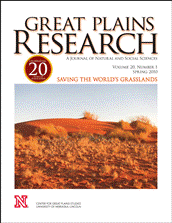Center for Great Plains Studies

Great Plains Research: A Journal of Natural and Social Sciences (through 2013)
Date of this Version
2009
Document Type
Article
Abstract
Midkiff presents his case with the clear purpose of raising our awareness and concerns. In some instances, however, he exaggerates the problem. He claims that the North Platte and South Platte Rivers at their confluence are perennially dry and that it is now possible to cross the Platte River in central Nebraska without one’s toes getting wet. Yet as I write this review streamflow in the central Platte River at Overton is about 500 cubic feet per second. He correctly observes that in many areas the Ogallala Aquifer will be dry in 30 to 100 years, but he also asserts that the Ogallala receives little recharge from precipitation and no recharge from the Rocky Mountains. In Nebraska, however, the Ogallala Aquifer still receives significant amounts of water from the Rocky Mountains and recharge from precipitation in the Sandhills. As a result, in Nebraska the amount of water in storage from predevelopment to the year 2000 has actually increased. Such exaggerations throw doubt on Midkiff’s conclusions and weaken his overall case.


Comments
Published in Great Plains Research 19.1 (Spring 2009): 127. © 2009 Copyright by the Center for Great Plains Studies, University of Nebraska-Lincoln.